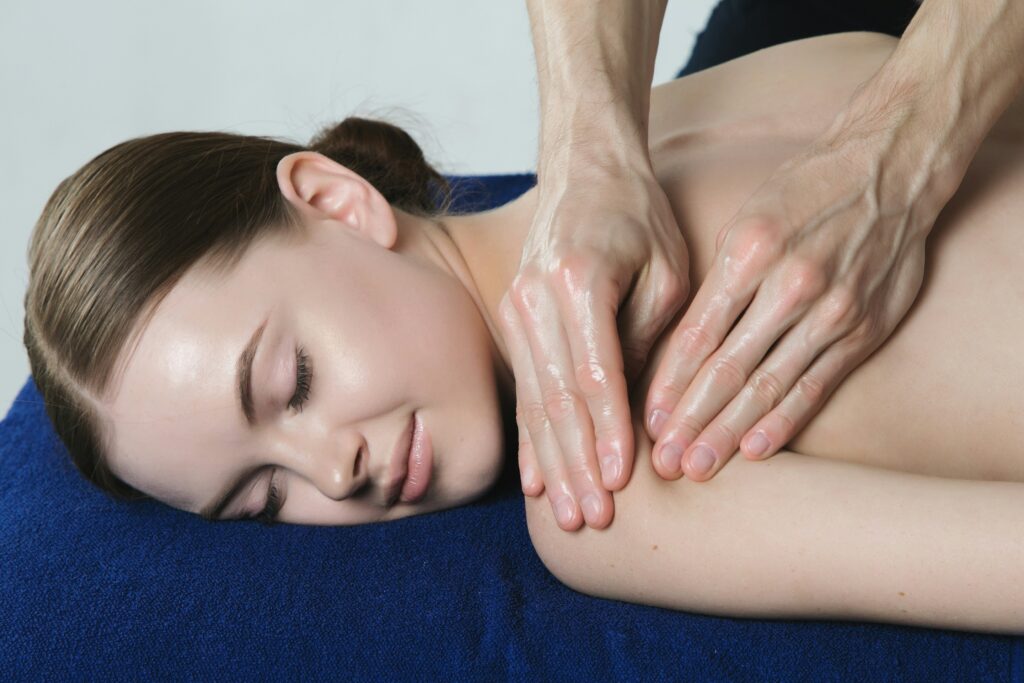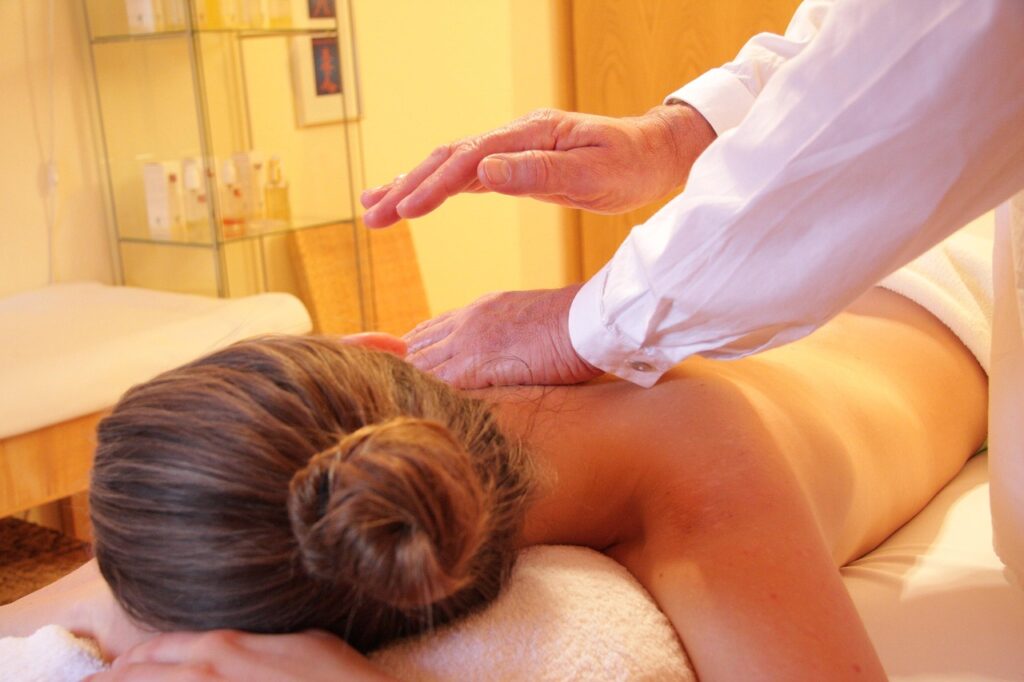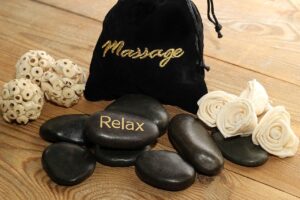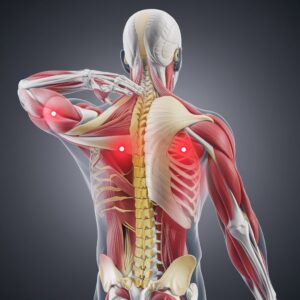Lymphatic massage is a gentle therapy aimed at stimulating the flow of lymph fluid in the body. This helps with detoxification, reduces swelling, and boosts immunity. In this article, you’ll learn about the benefits of lymphatic massage, how it works, and what to expect during a session.
What Is Lymphatic Drainage Massage?
Manual lymphatic drainage (MLD) is a distinct variety of lymphatic massage that involves gentle, rhythmic hand strokes to promote the movement of lymph fluid within the network of lymphatic vessels.
This technique supports the function of the lymphatic system—a complex network made up of numerous critical components, each of which plays an important part in maintaining the body’s fluid balance and immunological function. By filtering waste and toxins through the lymph nodes, the lymphatic system plays a crucial role in detoxification, helping you to sustain a healthy internal environment.

How do I know when to get Professional Lymphatic Drainage?
Here are several major indicators that you need expert lymphatic massage treatment:
-
Recurrent Infections -
Persistent Swelling and Edema -
Chronic Conditions such as Lymphedema and Fibromyalgia -
Headaches -
Digestive Issues -
Fatigue -
Skin Changes
How important is early detection of Lymphatic Congestion?
By working with healthcare experts from the beginning, you can ensure the development of a comprehensive treatment plan that addresses all aspects of your lymphatic health, including underlying causes and supportive therapies.
Early discovery is crucial for treatment intervention, reducing the chance of complications such as:
-
Fatigue -
Edema -
Chronic Swelling -
Fibrosis -
Skin Infections -
Swollen Lymph Nodes in Your Neck
How Does Lymphatic Massage Work?
Lymphatic massage utilizes a range of methods that incorporate gentle, rhythmic pressure to boost lymph circulation and support the body’s detoxification process. Developed in the 1930s by Dr. Emil Vodder, manual lymphatic drainage (MLD) utilizes precise, rhythmic hand movements to stimulate lymphatic flow through the vessels and nodes.
These spiral-like strokes help to reduce swelling and edema, particularly after surgery or injury. By activating the lymphatic system, MLD increases the immunological responses, aids in infection prevention, and promotes the efficient elimination of waste and toxins.
Studies have shown that managing post-traumatic edema is crucial for preventing secondary injury and promoting faster recovery in patients with orthopedic injuries, but further research is needed to determine its effectiveness in improving patient and disease-oriented outcomes for orthopedic injuries.
More studies conclude that while preliminary evidence and animal studies support the potential benefits of manual lymphatic drainage techniques (MLDTs) in reducing edema and muscle damage markers in athletic injuries, high-quality clinical trials are needed to establish definitive guidelines for their use in sports medicine and rehabilitation.
Additional research supports findings from a systematic review conducted to evaluate the effectiveness of massage in fibromyalgia. The review suggests that myofascial release provides significant benefits, particularly in reducing pain, anxiety, and depression. At the same time, manual lymphatic drainage may be more effective than connective tissue massage for stiffness, depression, and quality of life.

Are There Any Risks or Complications of Lymphatic Drainage Massage?
Lymphatic massage is generally considered a safe and effective method for managing lymphedema. However, it may not be suitable for everyone. You should avoid it if you have:
-
Deep Vein Thrombosis -
Heart Disease -
Blood Clots -
Infection -
Stroke -
Kidney failure
Health Benefits of Lymphatic Massage
1. Reducing Swelling and Inflammation
Manual lymphatic drainage (MLD) is particularly effective in reducing swelling and inflammation, making it a go-to treatment for conditions such as lymphedema, arthritis, and post-surgical rehabilitation. Massaging areas without swelling creates space for congested lymph fluid to flow, reducing swelling.
This technique can also help minimize facial puffiness and improve facial contours, giving you a more refreshed appearance.
2. Boosting Immune System
Lymphatic massage is known for its significant role in fortifying the immune system. It improves the body’s ability to absorb and transport lymph fluid, elevating the immune response’s efficacy.
During Manual Lymph Drainage (MLD), specific hand techniques exert pressure on the skin, helping to expel toxins and bacteria and bolster the body’s inherent defensive systems.
3. Enhancing Post-Procedure Healing
Manual lymphatic drainage (MLD) offers significant advantages following cosmetic surgeries. It aids in recuperation, diminishes discomfort, and promotes better blood flow. It becomes a vital component of care after a procedure by fostering quicker healing and minimizing the likelihood of developing postoperative lymphedema.
4. Detoxification
Lymphatic drainage massage helps eliminate waste and toxins from the body, resulting in a cleaner interior environment. This detoxification process reduces the strain on the liver and kidneys, allowing them to operate more effectively.

5. Improved Circulation
This massage technique increases blood flow, supplying vital nutrients and oxygen to tissues while eliminating metabolic waste. Improves circulation benefits, cardiovascular health, and energy levels.
6. Relaxation and stress relief
This massage’s soothing, rhythmic motions foster a state of relaxation and well-being. It can assist to reduce stress, improve sleep quality, and boost mental clarity.
Self-Lymphatic Drainage Techniques
Self-lymphatic drainage techniques can be a great way to maintain your lymphatic health between professional sessions. However, it’s essential to consult a healthcare provider before attempting these techniques, especially if you have underlying health conditions.
The goal is to ensure that self-drainage is safe and appropriate for your specific situation.
Self-administered lymphatic drainage methods require the application of gentle pressure alongside particular maneuvers aimed at stimulating the flow of lymph fluid. These techniques encompass soft, circular movements using one’s fingertips, gliding strokes oriented towards the lymph nodes, and progressing from the body’s outer extremities inward toward its core.
To preserve their effectiveness, refrain from applying oils or lotions while performing these massages.
Integrating Profesional Treatments with Self-Care
By combining professional treatments with your self-care practices, you can enhance the overall effectiveness of both approaches. Here are some examples:
1. Hydration & Nutrition
-
Drink plenty of water to keep lymph fluid moving efficiently.
-
Incorporate anti-inflammatory foods like turmeric, ginger, and leafy greens.
-
Consume a diet rich in fruits, vegetables, and lean proteins to support detoxification.
2. Movement & Exercise
-
Engage in rebounding (mini-trampoline exercises) to stimulate lymphatic flow.
-
Practice yoga, walking, and swimming to promote circulation and drainage.
-
Perform deep diaphragmatic breathing exercises to activate lymphatic circulation.
3. Manual Stimulation
-
Practice dry brushing before showering to encourage lymph movement.
-
Perform self-lymphatic massage using gentle, rhythmic strokes.
-
Use a gua sha tool or jade roller for facial lymphatic drainage.

4. Detox & Relaxation
-
Enjoy contrast showers (alternating hot and cold water) to stimulate circulation.
-
Take Epsom salt baths to support detoxification and reduce swelling.
-
Use a sauna or steam room to encourage sweating and toxin elimination.
5. Compression & Posture
-
Wear compression garments, if recommended, to reduce swelling.
-
Maintain good posture and avoid crossing your legs to prevent lymph stagnation.
-
Elevate legs when resting to assist fluid drainage.
6. Herbal & Aromatherapy Support
-
Drink herbal teas with ginger, dandelion, or red clover to support lymphatic function.
-
Use essential oils like grapefruit, cypress, or juniper for massage or diffusion.
Finding a Certified Lymphedema Therapist
It is essential for therapists specializing in lymphedema to obtain certification, demonstrating their proficiency in the correct methods of performing lymphatic massage and their comprehension of the intricate nature of lymphatic conditions.
Engaging with a therapist who is certified in manual lymphatic drainage (MLD) helps you reduce potential hazards linked to lymphatic massage while enhancing its therapeutic advantages.
Consulting Healthcare Providers
Always consult with medical professionals before initiating lymphatic drainage therapy, particularly if you suffer from existing health conditions. This precautionary measure guarantees that the treatment aligns with your unique health circumstances and prevents possible adverse effects.
By conveying details about your particular health issues to a healthcare provider, you can ascertain whether lymphatic drainage is an appropriate therapeutic option for you.
Frequently Asked Q’s
What is manual lymphatic drainage (MLD)?
Manual lymphatic drainage (MLD) is a gentle massage technique that moves lymph fluid through the body, aiding in detoxification and reducing swelling.
It’s a soothing way to support your body’s natural systems.
How does lymphatic massage boost the immune system?
Lymphatic massage can significantly boost your immune system by enhancing the transport of lymph fluid, which helps remove toxins and bacteria from your body more effectively.
So, if you’re looking to strengthen your immunity, this could be a great addition to your routine.
Can lymphatic massage help with post-surgery recovery?
Absolutely! Lymphatic massage can help reduce swelling and pain while speeding up your recovery after surgery, making it a great addition to your postoperative care plan.
Are there any risks associated with lymphatic massage?
Yes, lymphatic massage can pose risks for those with acute infections, serious circulatory issues, unstable hypertension, or renal failure, as it may worsen these health conditions.
Always check with a healthcare provider before getting one.
How can I find a certified lymphedema therapist?
Search for professionals with specialized training and recognized certifications in lymphedema management to find a certified lymphedema therapist.
You can also use online referral tools or ask your healthcare provider for recommendations.





